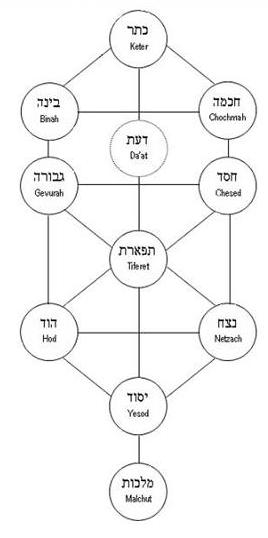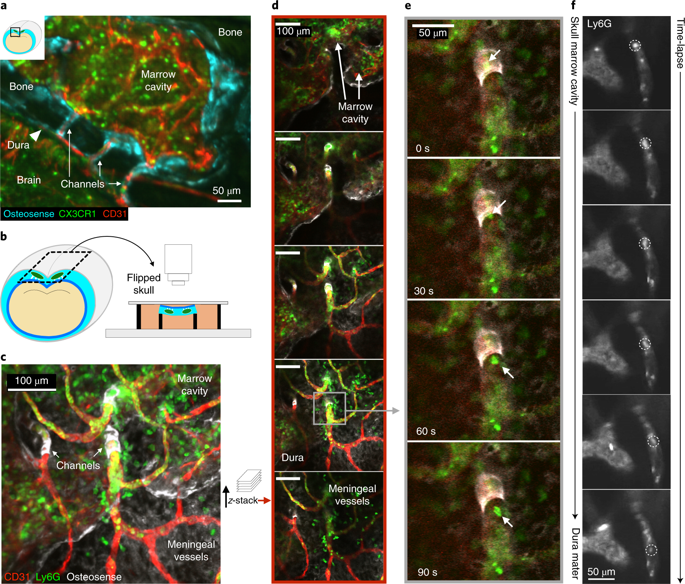The previous Lubavitcher Rebbe, the Rebbe Rayatz (a.k.a. the Fridriker Rebbe) told the story about his father, the Rebbe Rashab. Once the brother of Rebbe Rashab, Rabbi Menachem Mendel (a.k.a. the RM”M) told him that he read in a magazine an article that stated that scientists found a nerve in the brain regulating the cognitive function so that when a person needed to remember something he would tilt his head looking up, whereas when the person needed to concentrate, he’d tilt his head down. The Rebbe Rashab took his brother to his study, took from the shelf a book by the Second Lubavitcher Rebbe, the Mittler Rebbe, in which it stated the same thing. The Rebbe Rashab said to his brother, “You’d think he was a doctor, but he wasn’t. He saw Adam Kadmon in the higher world, and he knew that in the lower world it should be the same. A similar story happened this week. But first, we need to take an excursion into Kabbalah.

Rebbe Rashab
Kabbalah teaches that G‑d created the world through ten Divine emanations—Sefirot: Keter (Crown), Chokhmah (Wisdom), Binah (Understanding), Chesed (Kindness), Gevurah (Strength), Tiferet (Beauty), Netzach (Eternity), Hod (Splendor), Yesod (Foundation), Malchut (Sovernty):

The Torah states:
And G‑d created man in His own image, in the image of G‑d He created him.
Gen. 1:27
Accordingly, the Tree of Life is often represented in the anthropomorphic configuration called Ish (Man):

In this arrangement, the Ketter is identified with the skull, whereas Chokhmah and Binah are identified with the right and left hemispheres respectively. (To be clear, there absolutely nothing physical, let alone anthropomorphic about Divine emanations – this is just a metaphor, a visual aid and nothing more than that. Moreover, according to the Kabbalah, the human body has the shape it does because it reflects the structure of the soul, which, in turn, reflect the sephirotic configuration, not the other way around.)
The Zohar introduces the concept of the Partzufim (pl. of Patrzuf)—Divine Configurations (Visages, Personae, “Faces”). Whereas in the Zohar, Partzufim are synonymous with Sefirot, in Lurianic Kabbalah, each Partzuf contains a full complement of ten Sefirot as they exist in Atzilut, the world of Emanation, where they are inter-included and dynamically interact with each other.
The primary Partzufim and their dominant sefirot from which they develop are:
| Partzuf | Translation | Sefira | Represent |
| Atik Yomin | Ancient of Days | Keter (the inner dimension of Keter) | Divine Delight |
| Arich Anpin | Long Face, or Extended Countenance, the Infinitely Patient One, Macroprosopus | Keter (the source of divine compassion in the external dimension of Keter) | Divine Will |
| Abba | Father | Chokhmah | Wisdom |
| Imma | Mother | Binah | Understanding |
| Zeir Anpin | Small Face, Son | Six lower sefirot–midot—Chesed, Gevurah, Tiferet, Netzach, Hod, Yesod | Represents emotions: Kindness, Strength (strictness), Beauty (Compassion), Eternity (Endurance, Victory), Splendor (Submission), Foundation (Righteousness) |
| Nukvah | Female partner of Zeir Anpin | Malkhut | Daughter/sister, the feminine principle, royalty, sovereignty |
In his kabbalistic commentary on the Torah portion Toldot, the Ari”zal speaks of the patzuf Arich Anpin—the Extended Countenance. Arich Anpin is the Aramaic translation of Hebrew Erech Apaim, “slow to anger”—one the Thirteen Attributes of Mercy (Ex. 34:6-7). These Thirteen Attributes of Mercy are visualized as thirteen hairs of the beard of Arich Anpin descending to Chokhmah. Each of these “hairs” is a channel of rectification—Tikunai Dikna. In Kitvei Arizal, it is written:
The light that issues from the beard, via the hairs, is called mazal, because it “flows” drop by drop.
—Likutei Torah and Sefer Halikutim on Parshat Toldot (translated by Rb. Moshe Wisnefsky)
The Hebrew word “mazal” has a root M-Z-L, which means to flow. The Divine light is seen to flow through the hair of the Tikunai Dikna—the “beard” of Arich Anpin.
Writing about the mystical intentions (kavanot) of the month of Ellul, Rabbi Chaim Vital quotes his teacher, the Holy Ari:
…During the month of Elul, the thirteen sources of the Thirteen Rectifications of the Beard [in Aramaic, Tikunei Dikna] of Atika are opened, and they are revealed and shine below into the Makif of the brains [mochin] of the partzufim of Abba and Imma. This is as we have clarified in the beginning of the “Idra [Zuta]” in the Zohar, parashat HaAzinu, that from outside the brains of Abba and Imma, their light breaks forth and shines, in the secret of the “surrounding light” [“Or Makif“]; it is there that these Thirteen Rectifications of the [Supernal] Beard of Atika become revealed.
—Shaar Ruach HaKodesh, pg. 44a (translated by Baruch Emanuel Erdstein)
As we said before, in a human body, Keter with its two Partzufim—Atik Yomin and Arich Anpin—corresponds to the skull. Intellectual faculties—partzuf Abba (Chokhmah) and partzuf Imma (Binah)—correspond to the right and left hemisphere respectively. The makif (lit. “surrounding”) of the two brains—right and left hemispheres—is the dura that envelops them. The flow of the Divine life-force extends from Arich Anpin to Chokhmah (and, subsequently, to Binah, which receives from Chokhmah) through the channels of hair of Arich Anpin’s beard. But what do these hair-channels correspond to in the human body? The Arizal maps these thirteen parts of the beard of Arich Anpin to the facial hair (including the beard, which is the Kabbalistic source for why pious Jews to do not shave or even trim their beards, and some let their payot grow long), cheeks, and other parts of the face. The problem with this explanation is that a man’s beard doesn’t grow exactly from his skull, and his cheeks are not hair at all. It appears that here the correspondence breaks down! (Needless to say, I am not disputing the Arizal’s explanation, but merely pointing out that this explanation is not a pshat sheb’sod, i.e., not the literal meaning, but must be true on some other level.)
Indeed, until recently, the skull was viewed by a passive shell merely protecting the brain from the outside. The brain itself, enveloped in a membrane called “dura,” is floating in the cerebrospinal fluid filling the space between the dura and the skull with no direct connection to the skull.
On Aug. 27, 2018, the leading science journal Nature Neuroscience published a paper titled, “Direct vascular channels connect skull bone marrow and the brain surface enabling myeloid cell migration.” In this paper, the lead author, Fanny Harrison of Massachusetts General Hospital and Harvard Medical School, and her colleagues report an amazing discovery—it turns out that the skull, after all, is connected with the brain via direct microscopic vascular channels, just as Kabbalah predicted.
“Confocal microscopy of the skull–dura interface revealed myeloid cell migration through microscopic vascular channels crossing the inner skull cortex. These observations point to a direct local interaction between the brain,” write the authors in this ground-breaking paper.

Ex vivo confocal microscopy of channels connecting the skull marrow to the dura
Furthermore, the skull is no longer viewed as a passive shell. The skull, as most flat and long bones, contains bone marrow. During inflammation, which activates the innate immune system response, bone marrow in the skull produces more leukocytes and other innate immune system cells that are transported via microscopic vascular channels to the brain to heal the inflammation. A careful reader will notice that the hair in Arich Anpin’s beard are a symbolic representation for channels, through which the attributes of the Divine Mercy flows down to accomplish the tikkun—the reparation and rectification—Tikunai Dikna. The leukocytes created by the innate immune system in the skull’s bone marrow flowing down through the micro-vascular channels to the brain to heal, repair and rectify the damage caused by a stroke or inflammation do exactly that—Tikunai Dikna.
At long last, neuroscience found a physical counterpart to the Beard or Arich Anpin.

Shalom & Erev tov…R. Dov Ber Schneersohn’s (1860-1920) brother was R. Zalman Aharon Schneersohn (1858-1908). R, Menachem Mendel Schneersohn (1789-1866) was earlier, and was the 3rd Rebbe (Tzemach Tzedek). R. Zalman Aharon Schneersohn was never a Lubavitch Rebbe.
~~~~~~~~~~~~~~~~~~~~~~~~~~~~~~~~~~~~~~~~~~~~~~
STEPHAN PICKERING / חפץ ח”ם בן אברהם
Torah אלילה Yehu’di Apikores / Philologia Kabbalistica Speculativa Researcher
לחיות זמן רב ולשגשג…לעולם לא עוד
THE KABBALAH FRACTALS PROJECT
לעולם לא אשכח
IN PROGRESS: Shabtai Zisel benAvraham v’Rachel Riva:
davening in the musematic dark
We are not talking here about R. Menachem Mendel Schneersohn, the Tzemach Tzedek — the third Rebbe of Chabad Lubavitch. We are talking in this story about his grandson named after him — R. Menachem Mendel Schneersohn, the RAMAM. Rabbi Sholom Dovber Schneersohn, a.k.a. the Rebbe Rashab, the Fifth Rebbe of Chabad Lubavitch, had two brothers: Rabbi Zalman Aharon (the RAZA) and Rabbi Menachem Mendel (the RAMAM). As brought down in the Reshimus, it is the RAMAM that asked his brother, the Rebbe Rashab the question about the vein discovered in the brain.
BS”D
Please post the source material for the actual “Tikunai Dikna”, meaning to say: Where is the instructions of how to do it? or when/ how etc. (kitve Arizal? Zohar? other kabbalistic sources?)
Thank you
PS this week’s Parasha is Toldot
Good Shabos!
Kitvei Arial. Shaar Ruach HaKodesh, pg. 44a. I added a direct quote from there into the text.